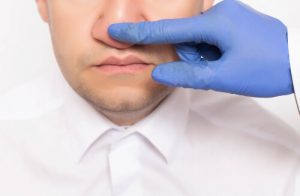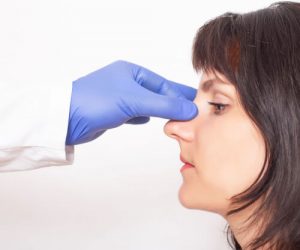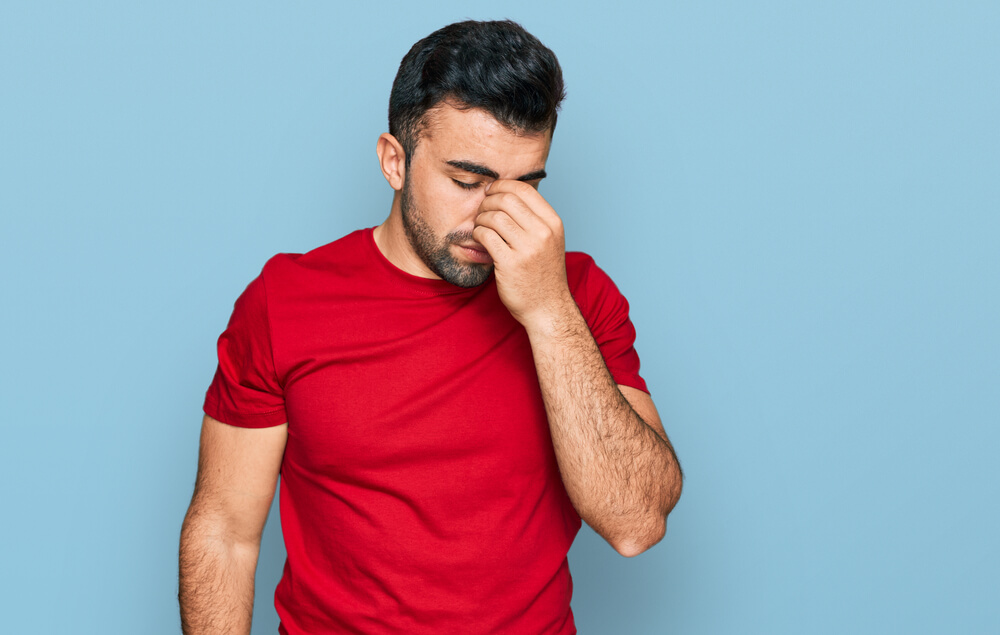Experiencing a hard bump on the side of nose after rhinoplasty can be concerning. This unexpected development can leave you wondering about its cause and what you should do next. Is it a normal part of the healing process, or does it require further intervention? In this article, we delve into the possible reasons behind a hard bump on the side of the nose after rhinoplasty and explore the best approaches to address it.
Read on to uncover the solutions and ensure your recovery stays on track.
Introduction to Post-Rhinoplasty Concerns
After undergoing cosmetic nasal , patients must be aware of potential concerns that can arise during the recovery period. Understanding these issues helps manage expectations and ensures a smooth recovery and proper healing process.
Healing Process: The healing after rhinoplasty can vary, with swelling and scar tissue formation being common. Swelling distorts the initial appearance of the rhinoplasty results but typically diminishes over time.
Observation of Changes: It’s vital to monitor any new developments, such as bumps on the nose or changes in the shape of the nasal tissues. These could be temporary due to swelling or may signal the need for further evaluation by your cosmetic doctor.
Communication with Surgeon: It is essential to maintain open communication with your rhinoplasty doctor. Discussing any concerns regarding the nose after rhinoplasty can help determine whether the changes are part of the normal healing process or require additional interventions.
Possible Revision Surgery: In some cases, the initial rhinoplasty might not achieve the desired outcome, necessitating revision rhinoplasty. This could be due to the formation of excessive scar tissue, misalignment of nasal bones, or other aesthetic concerns.
Long-term Care and Observation: Settling nasal structures can take up to a year. Patients should follow their doctor’s guidance on controlling swelling and optimising nasal passages’ healing for the best possible outcome.
Common Causes of Hard Bumps After Rhinoplasty
Rhinoplasty, a nose job, is a complex surgery that reshapes the nose for cosmetic or functional purposes. Despite the expertise of experienced cosmetic doctors everywhere, some patients may notice hard bumps on their noses after rhinoplasty. Understanding the common causes of these bumps is crucial for managing expectations and determining the next steps in care.
Scar Tissue Formation: The development of hard bumps is often associated with the formation of scar tissue. This scar tissue can form around the nasal bones or under the skin of the nasal dorsum, leading to noticeable irregularities.
Healing Process Variations: Individual variations in the healing process can lead to different outcomes, such as bump formation. Factors like genetics, the complexity of the , and adherence to postoperative care can influence healing.
Residual Swelling: In the early recovery period, what might seem like a hard bump could be areas of more pronounced swelling. Over time, as the swelling subsides, these bumps may disappear.
Underlying Cartilage and Bone Irregularities: Post-rhinoplasty bumps can also result from the underlying structure of the cartilage or nasal bones not being smoothly reshaped or realigned during the original . This might necessitate revision rhinoplasty for correction.
Improper Suture Material or Techniques: Occasionally, the materials used in the or the surgical techniques employed can lead to the development of bumps. Incorrect placement or non-absorbable sutures might need removal or adjustment.
How to Identify If the Bump Is Normal or Concerning
 When you notice a bump on your nose after rhinoplasty, determining whether it’s a normal part of the healing process or a sign of a potential complication is crucial. Here are key steps to help you identify if the first nose bump itself is normal or concerning:
When you notice a bump on your nose after rhinoplasty, determining whether it’s a normal part of the healing process or a sign of a potential complication is crucial. Here are key steps to help you identify if the first nose bump itself is normal or concerning:
Assess the Timing: Swelling and minor irregularities are common in the first few weeks to months after rhinoplasty. If the bump has appeared suddenly after this initial period or persists beyond the expected recovery timeframe, it may warrant further investigation.
Monitor the Changes: Monitor the bump over time. If it starts to reduce in size as the swelling subsides, it’s likely a normal aspect of healing. However, these signs might be concerning if the bump remains the same size, increases, or becomes painful.
Evaluate the Texture: Gently feel the bump. It could simply be swelling if it’s soft and fluctuates in size. A hard, immovable bump might be due to scar tissue formation, residual bone or cartilage, or other issues.
Consider the Location: Bumps along the nasal bones or nasal dorsum where modifications were made during are often expected. However, bumps appearing in areas not directly affected by the could be more concerning.
Consult Your Surgeon: The most reliable way to determine the nature of a bump is to consult with your rhinoplasty doctor. They can evaluate whether the bump is part of the normal healing process or indicates something more serious, like excessive scar tissue formation or a need for revision .
Get a Second Opinion: If you’re unsure about your doctor’s assessment or your concerns persist, seeking a second opinion from another experienced doctor can provide additional insights and peace of mind.
Effective Home Remedies and Care Tips
 Managing all the swelling and aftereffects of rhinoplasty and ensuring a smooth recovery can often be supported by simple home remedies and effective care tips. Here are some practical suggestions:
Managing all the swelling and aftereffects of rhinoplasty and ensuring a smooth recovery can often be supported by simple home remedies and effective care tips. Here are some practical suggestions:
Cold Compresses: In the first few days after , cold compresses can help reduce swelling and alleviate pain. Do not apply ice directly to the nose; instead, wrap ice packs or frozen peas in a soft cloth and gently place them on your cheeks to avoid putting pressure on the nose.
Elevate Your Head: In the first weeks after , it is crucial to keep your head elevated, especially when sleeping. Use two or three pillows to keep your head higher than your chest, which helps minimise swelling.
Saline Nasal Sprays: Consider using saline nasal sprays to keep nasal tissues moist and promote better healing. These can help clear out crusts and reduce the risk of irritation, especially if you had work done on the nasal passages.
Stay Hydrated: Drinking plenty of water after is essential, as it helps reduce swelling and keeps your body hydrated to support the healing process.
Avoid Strenuous Activities: High-intensity activities can increase blood pressure and lead to swelling or bleeding. Avoid such activities for at least a few weeks after your .
Healthy Diet: Eating a balanced diet rich in vitamins and minerals can aid your recovery. Foods high in vitamin C, zinc, and protein support wound healing and immune function.
Avoid Smoking and Alcohol: Smoking can impede your healing process by constricting blood vessels and decreasing blood flow to the surgical site. Alcohol can increase swelling, so it is best to avoid it during your recovery.
Protect Your Nose from Sun Exposure: Post-rhinoplasty, your nose will be more sensitive to the sun, which can lead to discolouration. Wearing broad-spectrum sunscreen and a hat outside can protect your skin and help maintain an even skin tone.
Follow Your Surgeon’s Instructions: Adhere strictly to any care instructions your doctor provides. This includes taking prescribed medications, attending follow-up appointments, and using any topical treatments as directed.
When to Consult Your Surgeon
 After rhinoplasty, keeping in touch with your doctor is crucial for monitoring your recovery and addressing any concerns that arise during the healing process. Here are specific situations when you should consult your doctor:
After rhinoplasty, keeping in touch with your doctor is crucial for monitoring your recovery and addressing any concerns that arise during the healing process. Here are specific situations when you should consult your doctor:
Persistent or Increasing Swelling
It’s normal to experience some swelling after rhinoplasty, which usually subsides gradually. However, if the swelling persists beyond the typical recovery timeline (usually a few months for major swelling, with subtle swelling lasting up to a year) or suddenly worsens, it could indicate an underlying issue such as infection, fluid retention, or improper healing. In such cases, timely consultation with your doctor must address the issue promptly and prevent further complications.
Unusual Pain
Postoperative pain should gradually decrease with time and be manageable with prescribed pain medications. If you experience pain that intensifies, persists despite medication, or reappears after initially subsiding, this could be a sign of underlying issues like infections, nerve damage, or complications from the itself. Immediate communication with your doctor is necessary to assess the pain’s cause and receive appropriate treatment.
Signs of Infection
Signs of infection include redness, warmth, excessive swelling, and pus or unusual discharge from the surgical site. Additionally, if you develop a fever or feel unwell, these could be systemic signs that the infection may spread or become more serious. Infections can compromise both the cosmetic and functional outcomes of the , making prompt medical intervention critical.
Breathing Difficulties
Difficulty breathing through the nose after rhinoplasty, especially if it doesn’t improve or worsens as the initial swelling subsides, may indicate issues such as internal swelling, obstruction, or structural problems not resolved during the . Consulting your doctor can help determine the cause and necessary interventions, including medications or additional functional cosmetic medical procedures.
Unexpected Bleeding
While some minor bleeding is expected immediately after , persistent or heavy bleeding after the initial recovery phase is not typical. Such bleeding might suggest an unresolved internal issue or excessive activity that could disrupt the surgical site. Immediate consultation with your board-certified cosmetic doctor is essential to address the cause of the problem and prevent further blood loss.
Dissatisfaction with Results
If you are concerned about your nose’s appearance during the healing process or if the outcome significantly deviates from what was agreed upon pre-, it’s important to discuss these concerns with your doctor. Sometimes, initial appearances can be misleading due to swelling; however, your doctor can provide reassurance or discuss options for revision if the final results are unlikely to meet your expectations.
Numbness or Unusual Sensations
Initially, persistent numbness, tingling, or unusual sensations around the surgical area are common but should gradually diminish. If such sensations persist or become bothersome, they could indicate nerve impingement or damage. Early assessment by your doctor is important for determining the cause and exploring potential treatments to alleviate symptoms.
Visible Irregularities
If you notice bumps, dents, or asymmetry in the areas modified during that do not resolve or improve over time, they may require further evaluation. Such irregularities can arise from the underlying structure’s incorrect settling or issues like scar tissue formation. Evaluating these with your doctor can help determine if they are likely to resolve independently or if further treatment, such as revision , is needed.
Long-Term Solutions and Treatments
 After rhinoplasty, achieving and maintaining optimal results sometimes requires long-term solutions and treatments, especially if complications or dissatisfaction with the initial outcome arises. Here are some effective long-term strategies:
After rhinoplasty, achieving and maintaining optimal results sometimes requires long-term solutions and treatments, especially if complications or dissatisfaction with the initial outcome arises. Here are some effective long-term strategies:
- Revision Rhinoplasty: If the results from the initial are not satisfactory or complications develop, revision rhinoplasty may be necessary. This procedure can correct functional and aesthetic issues, such as persistent bumps, asymmetry, or breathing difficulties.
- Steroid Injections: Steroid injections can be an effective treatment for minor irregularities like small bumps or excessive scar tissue. These injections help reduce inflammation and smooth out minor imperfections without additional .
- Laser Treatments: Laser therapy can refine the skin’s appearance on and around the nose, especially if there are issues with redness, scar visibility, or texture differences post-.
- Therapeutic Massages: In some cases, specialised massages, such as lymphatic drainage, can help reduce persistent swelling and improve the contour of the nose post-rhinoplasty. These should be performed by a professional trained in post-surgical lymphatic massage.
- Long-term Medication: Long-term medication may be prescribed to manage these issues effectively for patients experiencing chronic swelling or allergic reactions affecting the nasal tissues.
- Continual Medical Monitoring: Regular follow-up appointments with your cosmetic doctor are crucial. These check-ups help monitor the healing process, assess the long-term results of the , and adjust the treatment plan as needed.
- Patient Education and Lifestyle Adjustments: It is vital to educate patients about the importance of sun protection, proper nutrition, and avoiding behaviours that could compromise the results (like smoking or excessive alcohol consumption) to maintain the benefits of rhinoplasty.
- Psychological Support: Sometimes, patients may struggle with body image issues after procedures. Referring to a counsellor or therapist to address these feelings can be beneficial.
If you notice a hard bump on the side of the tip of your nose after rhinoplasty, it’s essential to consult your doctor. This could be a normal part of the healing process or a sign of a complication such as scar tissue formation. Early intervention can help ensure the best possible outcome and maintain the aesthetic improvements of your rhinoplasty. Keep in close communication with your healthcare provider to monitor any changes and follow their guidance for postoperative care.
If you’re experiencing a hard bump on the side of your nose after rhinoplasty, don’t hesitate to take action. Call us at (02) 8880 5116 Rhinoplasty Sydney Cost for expert advice and to discuss your treatment options. Our specialists help you achieve the best results and address any concerns.
References
8 months post rhinoplasty, a bump appeared on the bridge of the nose and bridge
https://www.realself.com/question/england-united-kingdom-rhinoplasty-bump-appeared-bridge-revision
Dorsal Humps (Bump on Nose): Causes and More
https://www.healthline.com/health/dorsal-hump
Unusual Postrhinoplasty Complication: Nasal Dorsum Cyst
https://www.ncbi.nlm.nih.gov/pmc/articles/PMC4172887/
Rhinoplasty (Nose Job): Surgery, Recovery, Before & After
https://my.clevelandclinic.org/health/treatments/11011-rhinoplasty
Rhinoplasty
https://www.mayoclinic.org/tests-procedures/rhinoplasty/about/pac-20384532

